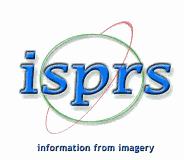|
Book Review Introduction to Microwave Remote SensingIain H Woodhouse, Talyor & Francis Group, London, 2006, pp 370. Reviewed by: Prof Tony Milne, University of New South Wales, Australia The first part of chapter one, Okabe describes an introduction to basic concepts of GIS and its components. This is brilliant ideas especially to help those scholars in Humanities and Social Sciences that have little knowledge of GIS. The author gives a substantial introduction to GIS and its analytical capabilities, which is helpful for beginners to understand basic concepts of GIS. Following chapters are well-organized into sections covering data acquisition, database management, spatial analysis, GIS applications in various fields and visualization. The first section of the book deals with data acquisition techniques in the study of ethnography, archeology and behavioral science. Chapter 2 by Tanaka et al. describes the application of Spatio-Temporal Association with Multiple Photos (STAMP) software used to create, publish, share, and navigate pseudo-three-dimensional (3D) spaces comprised of multiple photos. This technique is very useful for ethnographers, who want to recreate events and activities taken during the fieldwork. The ability to recreate events and experience at the fields would be useful in analyzing data from the fields. Chapter 4 and Chapter 5 describe the application of laser scanners as data acquisition techniques in archeology and possibly behavioral sciences respectively. These two chapters provide new insight on approach of acquiring data for excavation purpose or for detecting human movements. The second section of the book describes spatial database starting with chapter 6 that deals with the development of historical population grid database in evaluating long-term population changes. It follows with two chapters describing the method of delineating and constructing statistical database for urban employment area (Chapter 6) and modeling archeological sites (chapter 7) respectively. The third section discusses about tools for spatial analysis. Chapter 8 is particularly helpful for researchers to find free spatial analysis tools developed by GIS communities that might be useful in dealing with their problems. Chapter 9 describes the development and application of statistical analysis for spatial relationship method called SAINF (Spatial Analysis of the Effect of Infrastructural Features) in examining the effect of features on the distribution of events. While chapter 10 demonstrates the method of analyzing events called SANET that can be used to evaluate events that occur along the network. These tools are particularly useful for scholars in Humanities and Social Sciences in evaluating events on network. The following section is particularly useful as references for students and researchers alike. It provides example on the applications of spatial analysis in history, archeology, sociology, economy and service planning. Chapter 11 discusses about the application of spatial reasoning in inferring the location of historical facilities. Chapter 12 and Chapter 13 deal with simulating agricultural productivity of ancient settlement and reconstructing paleoenvironments in order to understand the dynamics of human ecology respectively. These two chapters are particularly useful for archeologists in recreating and understanding the past. Chapter 14 provides significant discussion on method of combining data from various sources in analyzing migration and regional diversity in Egypt. Chapter 15 discusses another interesting application of GIS in evaluating the effect of environmental factors on housing prices. Chapter 16 is another chapter dealing with urban economy where the authors try to estimate urban agglomeration for Japanese Metropolitan Areas. The final chapter in this section discusses the method of evaluating school redistricting based on the study of the school family system. All chapters in this section provide useful example of applications in various fields in Humanities and Social Sciences. Finally, part five has three chapters related to visualization in historical study, site assessment, and environmental psychology. Chapter 18 covers 3-d visualization method for historical studies such that users will be able to reproduced old cities landscape from old maps, pictures or documents. Chapter 19 deals with visualization for site assessment useful for marketing purpose. The final chapter provides example of three dimensional GIS in environmental psychology where mental map becomes tool of visualizing the subjective impressions of districts in city. Generally, this book highlights invaluable up-to-date GIS techniques and applications in Humanities and Social Sciences. This book perhaps, should also include the application of GIS in crime analysis, poverty and other socio-economic applications.
|
|
|
|
|
